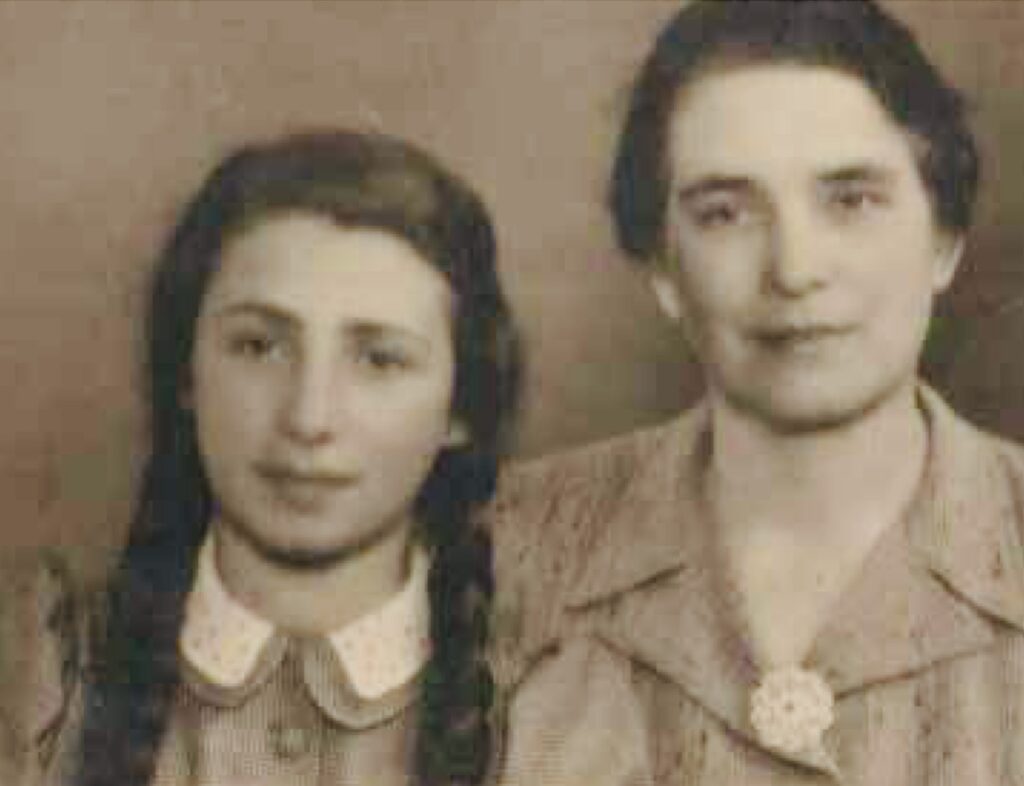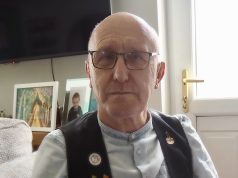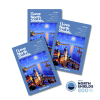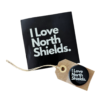By Diane Wailes
Imagine being sent away from your home as a child. Away from your family, to a strange country where you don’t speak the language. That’s what happened to North Shields resident, Gay Keenaghan – known to her family as Gabriele Weiss – who, at 98 years of age, is one of the oldest survivors of the Kindertransport.

‘Kindertransport’ – ‘children’s transport’ in German – was a rescue mission in the months leading up to the Second World War, which brought 10,000 unaccompanied refugee children to Britain. Most were Jewish, sent on the perilous journey by their families to escape the Nazis. Many never saw their parents again.
Gay was born in Vienna in 1926, to a Catholic mother and a Jewish father, and was cared for by her grandmother, after her mother died in 1935. The course of Gay’s life changed forever in March 1938, when Austria was annexed by Hitler’s Nazi Germany and German soldiers marched into Vienna. Gay remembers being forced to wear a yellow Star of David on her coat and being unable to play in the park: the sign in the park said ‘Jude Verboten!’ (Jews forbidden).
In November 1938, the situation suddenly became much more dangerous. Gay vividly remembers hearing screams, gunshots and breaking glass, as Jewish homes and businesses across Vienna were ransacked on what became known as ‘Kristallnacht’, or the Night of Broken Glass. “A dreadful night, I could never forget it in all my life” she says.
The day after Kristallnacht was Gay’s 12th birthday. She waited for her father to come to celebrate with her but he had disappeared and she never saw him again. Years later she was able to piece together what had probably happened to him; a period in hiding followed by arrest and transportation to a Jewish ghetto in Poland, then a final journey to Auschwitz.
News of the horrors of Kristallnacht reached Britain and the plan was hatched to rescue children who were in danger and bring them, unaccompanied, to Britain. Gay doesn’t know when her grandmother heard about the Kindertransport but in early 1939 she remembers her grandmother saying, “Let’s go and have our photographs taken, we don’t know when we’ll meet again, how we’ll meet again or if we’ll ever meet again. Let’s have something to remember each other.”
Gay can still clearly recall the night of 24th April 1939 when her Grandmother took her to the railway station at midnight. Only children were allowed on the train, some as young as three, and each one with an identity label around their neck. Each child was allowed to take with them only one small case for clothes and one toy; Gay took her favourite teddy bear. Even now, the memory of that night makes her feel emotional, as she remembers the train doors being closed, children waving goodbye to their families and the fear of heading to an unknown destination.
The journey from Vienna was long and difficult. Members of the Gestapo patrolled the train, searching the children’s bags and checking the details on their labels. At the Dutch coast, Gay saw the sea for the first time and from there it was a boat to Harwich and a new life in England.
Placed with a foster family who spoke no German, she had to quickly learn English and settle into a new school and a completely different way of life. Thankfully, her grandmother had the foresight to hide some writing material in the bottom of the little suitcase so Gay was able to send letters back to Vienna. But with the outbreak of war, all contact with her family stopped.
Gay’s new life in Britain wasn’t easy but she was resilient and determined to do well at school, to achieve her ambition to become a teacher.
When she reached her sixteenth birthday her hopes received another blow: her Austrian birth meant that she was now classed as an ‘enemy alien’ and was forced to leave school. A period in London followed, where she trained to be a nursery nurse. Gay had a stroke of good luck when her first employer helped her to apply for British citizenship just before her 21st birthday.
Talking to Gay, the vivid memories come flooding out, painting pictures from a truly amazing life: the London skyline glowing red with fires during the Blitz; celebrating in front of Buckingham Palace on VE Day; the absolute joy after the war ended when a letter came in a handwriting she knew very well, from her beloved grandmother.
After the war, Gay secured a place at a teacher training college in County Durham, and her life in the North East began. She met her future husband, Ken, and in 1951 he arranged a surprise road trip all the way to Vienna for her to be reunited with her grandmother. Children followed – two daughters – then three grandchildren and two great-grandchildren. And Gay achieved her teaching ambition, eventually becoming headteacher at Central Middle School in Wallsend. She now lives in Linskill Park in North Shields which she describes as a lovely place to live – and she’s an avid reader of ‘I Love North Shields’!
It’s been an enormous privilege to talk with Gay and to hear first-hand her amazing life story, living through some of the most tumultuous and significant events of the twentieth century. Surely, one of North Shields’ most remarkable residents.
If you’d like to read more about Gay’s life,
‘My Story’ by Gabriele Keenaghan BEM is published by the Association of Jewish Refugees on www.ajrmystory.org.uk














